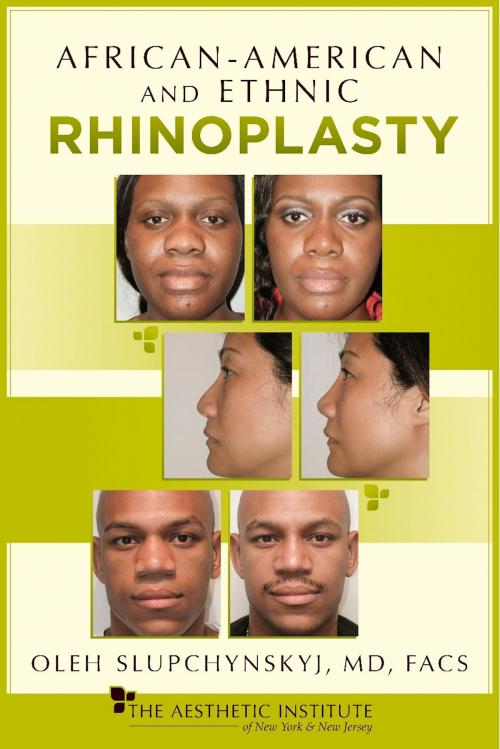African-American and Ethnic Rhinoplasty
Nonfiction, Health & Well Being, Medical, Surgery, Plastic & Cosmetic| Author: | Oleh Slupchynskyj, MD, FACS | ISBN: | 9781483515120 |
| Publisher: | BookBaby | Publication: | December 23, 2013 |
| Imprint: | Language: | English |
| Author: | Oleh Slupchynskyj, MD, FACS |
| ISBN: | 9781483515120 |
| Publisher: | BookBaby |
| Publication: | December 23, 2013 |
| Imprint: | |
| Language: | English |
Dr. Oleh Slupchynskyj, a dual board certified facial plastic surgeon in private practice in New York City, performs hundreds of cosmetic surgery procedures a year on ethnic or non-Caucausian patients. After hearing an overwhelming number of discouraged Ethnic and African-American patients complain that there was nowhere they could turn for even basic information to answer their particular cosmetic surgery questions, he felt compelled to write this essential and honest consumer guide to address their very specific desires, questions and concerns. Dr. Slupchynskyj believes educating patients to be one of the most important roles of a plastic surgeon. In the past decade, there has been an unprecedented demand for cosmetic procedures, specifically in the ethnic population. The American Society of Plastic Surgeons reports that since 2000, cosmetic plastic surgery procedures for ethnic patients are up a whopping 129 percent for African Americans and 173 percent for Hispanics. Socio-economic and media influences provide easier access and acceptance to cosmetic surgery in the minority communities. Two-time elected and current President of the United States, Barack Obama, has also placed African-Americans in the limelight. Cosmetic surgery today is no longer the domain of Caucasians and can no longer be characterized by race, or gender. Yet, despite these incredible statistics, African-American facial cosmetic surgery has and still remains the most neglected, least understood and least talked about.
Dr. Oleh Slupchynskyj, a dual board certified facial plastic surgeon in private practice in New York City, performs hundreds of cosmetic surgery procedures a year on ethnic or non-Caucausian patients. After hearing an overwhelming number of discouraged Ethnic and African-American patients complain that there was nowhere they could turn for even basic information to answer their particular cosmetic surgery questions, he felt compelled to write this essential and honest consumer guide to address their very specific desires, questions and concerns. Dr. Slupchynskyj believes educating patients to be one of the most important roles of a plastic surgeon. In the past decade, there has been an unprecedented demand for cosmetic procedures, specifically in the ethnic population. The American Society of Plastic Surgeons reports that since 2000, cosmetic plastic surgery procedures for ethnic patients are up a whopping 129 percent for African Americans and 173 percent for Hispanics. Socio-economic and media influences provide easier access and acceptance to cosmetic surgery in the minority communities. Two-time elected and current President of the United States, Barack Obama, has also placed African-Americans in the limelight. Cosmetic surgery today is no longer the domain of Caucasians and can no longer be characterized by race, or gender. Yet, despite these incredible statistics, African-American facial cosmetic surgery has and still remains the most neglected, least understood and least talked about.















